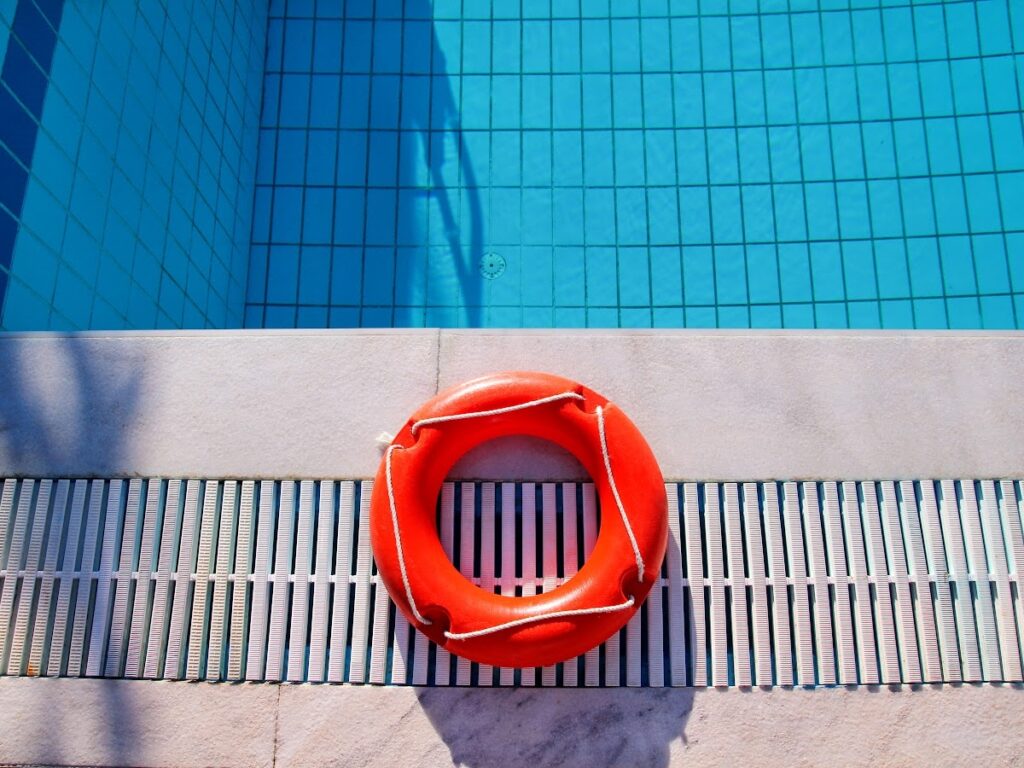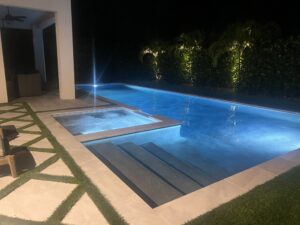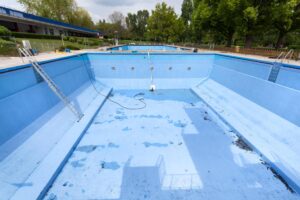At the core of pool safety lies proper fencing – its importance cannot be overstated. A well-constructed and strategically installed pool fence serves as a vital safeguard, keeping out potential intruders like humans, pets, and wildlife alike. This comprehensive article highlights its many facets of importance while showing its link to phosphate introduction prevention. By understanding safety requirements, exploring various fencing types, and learning installation techniques you’ll gain the power to create a secure haven for family enjoyment of the pool area.

Secure Pool Fencing Is Crucial
Pool fencing is a key element of pool safety, providing a safeguard against unauthorized entry and animals entering the area. Not only is pool fencing vital in keeping people away, it is also vital in keeping pets and wildlife out; pets or wildlife could bring with them contaminants that compromise water quality if allowed into your pool area. By building an effective barrier you not only enhance safety but also contribute to improving the environment overall.
Understanding the Impact of Pets and Wildlife on Society
Pets and wildlife, while charming in their own right, can inadvertently introduce debris and contaminants into your pool. Their curiosity can lead to leaves, dirt, and even bodily waste in the water. When left unchecked, these substances contribute to elevated phosphate levels, fueling algae growth. Thus, the impact of pets and wildlife on pool contamination underscores the necessity of effective pool fencing as a preventive measure.
The Role of Phosphates in Pool Contamination
Phosphates, often introduced through organic matter like leaves and debris, act as nutrients that algae thrive on. When your pool becomes a breeding ground for algae, its clarity and water quality suffer. The result? A pool that not only appears uninviting but also necessitates extensive maintenance to restore its equilibrium. By investing in proper pool fencing, you tackle the root cause of phosphate introduction, preemptively averting the potential for algae outbreaks.
Discovering Types of Pool Fences
Pool fencing options can be tailored to suit individual preferences, needs, and aesthetics. Chain link fences combine visibility with safety by creating an unobstructed barrier against unauthorized entry; wooden fences combine security with visual appeal for an inviting outdoor space; glass fencing offers modern elegance while unobstructed views, while mesh fencing serves as an easy temporary measure allowing quick removal when desired.
Chain Link Fences: Balancing Visibility and Safety
Chain link fences are known for their durability and transparency, offering unobstructed views through their open design that connect your pool area to its surrounding environment. Their open design also maintains this connection while acting as a secure boundary that deters pets and wildlife from entering. By restricting access, you reduce the likelihood of contaminants like phosphates entering the water supply thereby maintaining its pristine condition and saving your pool.
Wooden Fences: Blending Aesthetics and Security
Wooden fences combine aesthetics and security, providing an inviting ambiance while serving as a sturdy barrier. Available in an array of designs and finishes, wooden fences can be customized to complement your outdoor decor while serving as an effective deterrent against animals that might access your pool area – pets or wildlife alike! In addition, these barriers ensure your pool remains debris-free; upholding its integrity will contribute to its long-term health.
Glass Fences Offer Modern Elegance With Unobstructed Views
Glass fences offer modern elegance with unobstructed views, and provide an uninterrupted line of sight for you to keep an eye on your pool area at all times. Glass fencing also increases safety by keeping pets and wildlife away from accessing it directly, reducing potential contaminants entering into the pool, thus decreasing phosphate buildup risks.
Mesh Fences: Temporary Solutions with Ease of Removal
Mesh fences offer a flexible solution that combines security with convenience. Particularly suitable for temporary needs or specific occasions, mesh fences can be easily installed and removed. This versatility is ideal for families with pets or events where safety is a priority. By keeping pets and wildlife away, you maintain a controlled environment that minimizes the risk of phosphate contamination.
Safety Requirements and Regulations
Safety regulations govern the design and installation of pool fences to ensure they meet rigorous standards, specifically minimum height specifications that must be met by any fence installed around a swimming pool. In general, 48 inches is an optimal height that prevents easy access for pets and wildlife entering into the pool area, thus decreasing the chances of phosphate introduction into waterways.
Minimum Height Requirements for Effectiveness: Meeting Standards of Performance
The minimum height requirement of pool fences, often 48 inches, plays an essential role in their effectiveness. It acts as a powerful deterrent against pets and wildlife from jumping or climbing over. Adherence to this standard creates a protective enclosure that minimizes external risks of phosphate contamination significantly.
Gate Regulations: Establishing Procedures to Guarantee Proper Entry and Exit
Gates play an essential part in maintaining your pool’s safety. Gates must conform to specific regulations, including self-latching mechanisms that automatically close and latch after opening – this protects against accidental or unauthorized entry from pets and wildlife that might introduce phosphates into the water system.

Closing and Self-Latching Mechanisms: Preventing Unauthorized Access
Pool gates require closing and self-latching mechanisms that secure them to prevent unauthorized entry. By automating these mechanisms, the gate remains securely latched after every use – effectively blocking off pets and wildlife from entering through an ajar gate – as well as further strengthening its defenses against possible phosphate contamination of your pool.
Installing a Pool Fence: A Step-by-Step Guide
Installing a pool fence involves a systematic process that ensures security and regulations compliance. The journey begins with selecting suitable fence materials that align with your preferences and requirements. Once chosen, determining fence placement is crucial; strategically enclosing the pool area guarantees maximum safety. The decision to undertake DIY installation or engage professionals also warrants consideration, as expertise ensures precise height measurement and gate functionality.
Selecting Suitable Fence Materials
When selecting fence materials, prioritize durability, longevity, and aesthetics. Materials like aluminum and vinyl resist weather and rust, ensuring longevity in various conditions. Wood presents a timeless appeal, harmonizing with natural surroundings. Glass fosters a modern look, providing transparency while maintaining security. Mesh offers temporary solutions for specific needs. By choosing the right materials, you not only enhance security but also contribute to the visual appeal of your pool area.
Determining Fence Placement: Enclosing the Pool Area
Strategic fence placement is a fundamental aspect of pool safety. The fence must fully enclose the pool area, leaving no gaps or areas vulnerable to unauthorized access. Creating an impenetrable barrier prevents pets and wildlife from entering the pool vicinity and introducing phosphates. Thoughtful placement enhances safety and ensures that your pool’s environment remains untainted by external contaminants.
DIY vs. Professional Installation: Making the Right Choice
The decision between DIY installation and professional engagement merits careful consideration. While DIY installation may seem cost-effective, professional expertise offers unparalleled accuracy and assurance. Professionals know to precisely measure fence height, ensuring compliance with safety regulations. Gate functionality and secure latching mechanisms are also guaranteed, leaving no room for oversights that could compromise safety and inadvertently introduce phosphates.
Ensuring Compliance with Pool Safety Standards
Adhering to pool safety standards is a non-negotiable aspect of pool ownership. The Consumer Product Safety Commission (CPSC) provides guidelines that govern pool safety measures, including pool fencing. These guidelines ensure a secure environment that prevents accidents and unauthorized access. Complying with CPSC regulations demonstrates your commitment to safety and plays a pivotal role in preventing the introduction of phosphates into your pool area.
Consumer Product Safety Commission (CPSC) Guidelines
The CPSC outlines stringent guidelines to uphold pool safety standards. These guidelines encompass various aspects, such as minimum fence height requirements, gate specifications, and self-latching mechanisms. By aligning with CPSC recommendations, you create a fortified defense against unwanted intrusions, including pets and wildlife. A secure pool environment directly contributes to the prevention of phosphate introduction, fostering a healthier pool ecosystem.
Local Regulations and Permits: Navigating Legal Requirements
Not only should CPSC guidelines be taken into account during installation of pool fencing, but local regulations and permits must also be considered as integral factors. Different regions may have unique safety requirements that need to be fulfilled for effective pool fence installation; researching these regulations thoroughly before getting permits to install your pool fence is imperative to maintaining pool safety while at the same time showing your commitment to preventing phosphate introduction into your water source.
Benefits Beyond Safety: Increased Aesthetics and Privacy
As much as pool fencing serves a primary safety goal, its benefits extend well beyond this objective. Thoughtfully chosen materials and designs for pool fences can add aesthetic enhancements to your pool area. Wooden fences exude warmth that blends in perfectly with natural surroundings while glass provides elegant modern flair while still offering unobstructed views. In addition, pool fencing adds privacy, giving you space to enjoy your pool retreat without interruption from outside sources.
Enhance Pool Area Aesthetics with Deliberate Fencing Selections
The selection of pool fencing materials plays a pivotal role in elevating the visual appeal of your pool area. Wooden fences offer timeless aesthetics that complement outdoor spaces perfectly, blending into their environments seamlessly while creating an inviting ambiance. By elevating its aesthetics you not only establish a secure space but also a charming oasis for relaxation and recreation.
Privacy Considerations for Pool Retrench Enclosure
A well-designed pool fence adds both aesthetics and safety and increases privacy. When chosen correctly, fencing can serve as a place where you and your family can unwind together without being watched by outsiders – providing more intimate moments without interruptions from passersby or distractions from onlookers. When constructed carefully and harmoniously with safety and tranquility in mind, it creates the ideal haven.
Professional Pool Fencing Services for efficient results
Implementing a pool fence requires an in-depth knowledge of safety standards, regulations, and installation techniques. Partnering with professionals who specialize in pool fencing ensures these aspects are expertly addressed. Expert consultation can provide tailored solutions tailored to meet the specific needs and layout of your pool while professional installation ensures height measurements and gate functionality is executed precisely to avoid compromise in safety.
Expert Consultation: Tailoring Fence Solutions to Meet Your Specific Needs
Pool fencing is not a one-size-fits-all solution; professional advice can be invaluable in assessing your pool area’s layout and selecting an optimal fencing option. Professionals take into account factors like pool location, outdoor space availability, and aesthetic preferences when developing solutions that maximize security while simultaneously improving aesthetic appeal – By tapping their expertise you can craft a personalized strategy tailored perfectly to meet your requirements.
Ensuring Quality Installation: From Height Precision to Gate Functionality
A crucial aspect of effective pool fencing lies in the quality of installation. Professionals bring precision to the installation process, ensuring that fence height meets safety standards. Gate functionality, including self-closing and self-latching mechanisms, is rigorously examined to guarantee security. This meticulous approach leaves no room for oversights, safeguarding your pool area against potential intruders and the introduction of phosphates.
Step One: Making Investments to Safeguard and Enhance the Beauty of Your Pool Area
Investment in proper pool fencing goes beyond mere safety; it’s an investment in your family and pool’s well-being that pays dividends in terms of durability. A pool fence serves as an invaluable layer of protection, blocking access from pets, wildlife, and children who might attempt to access it unauthorized. By choosing an appropriate type of fence for your area, you create an impenetrable shield against unwanted intrusions – and potentially reduce debris contamination!
Requirement for a Pool Fence: Provides A Significant Layer of Protection
A pool fence is essential to ensure safety and prevent accidents. A properly installed and compliant pool fence serves as an essential layer of protection, deterring unauthorized entry from pets and wildlife while safeguarding against possible sources of phosphate contamination in your pool area. By adhering to this requirement, you prioritize pool safety while taking proactive steps to maintain its health.
Adopting the Appropriate Type of Fence for Your Pool Area
With such a diverse selection of fence types to choose from, you can easily select one that meets your preferences, aesthetics, and safety needs. Chain link, wood, Glass or mesh each offers specific advantages – the key lies in choosing one that can effectively shield pets and wildlife while still remaining free of potential sources of phosphate contamination in your pool environment.
Establish a Secure Barrier against Intrusions by Building Barriers against Unwanted Invasions.
Installing a pool fence is an active step towards creating a secure barrier against unwanted intrusions, such as curious pets, wildlife wandering freely, or unsupervised children. A well-constructed fence acts as a steadfast line of defense against intrusion from pets, wildlife, or unsupervised children, keeping out debris and pollutants while simultaneously supporting the prevention of phosphate introduction for an overall healthier pool experience.
Create a Safe Haven for Family Fun
Above all, your pool area should be a sanctuary where your family can spend quality time without worries or anxiety. Secure fencing contributes to this sense of tranquility by keeping out unwanted visitors or potential accidents; pets or wildlife entering can ruin its serenity – so by installing effective measures, you’ll ensure it remains an idyllic setting where memories are made and relaxation thrives.

Contributing to Pool Water quality by Preventing Phosphate Intake
Safety and water quality go hand-in-hand, as a pool that meets safety standards is more likely to remain free from contaminants such as external debris that introduce phosphates that contribute to algae growth and compromise clarity. By investing in pool fencing, you actively contribute towards preventing phosphate introduction; not only is this approach safer but it can also improve overall ecosystem health in your pool environment.
Overall, pool fencing’s importance goes far beyond security; it directly affects your pool environment’s health and longevity. By understanding how pets, wildlife, and phosphates impact your pool environment, recognizing their role, and realizing you need a robust barrier is evident. Strategic fence selection meets safety regulations with professional installation to provide a secure haven that ensures family enjoyment while safeguarding water quality – an investment in appropriate pool fencing is a testimony of your commitment to safeguarding your cherished pool retreat!
Specializing in all things pool services, the team behind Finns Pool Services brings more than just technical expertise to West Palm Beach. Rooted in family values, this full-service company has not only built a legacy in top-notch pool care but also prides itself on its vast team of experts and its unwavering commitment to professionalism. With countless successful pool projects under their belt, they stand as a beacon of trust and quality in the heart of Florida. Dive into a world where dedication meets the deep end.




